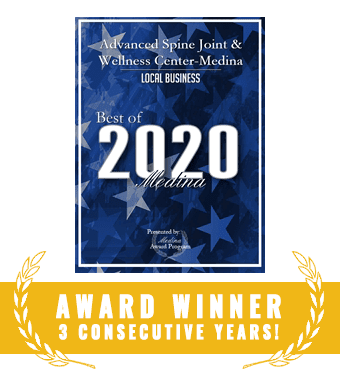How To Differentiate Between Acute & Chronic Joint Pain: Key Indicators in Medina OH
How To Differentiate Between Acute & Chronic Joint Pain: Key Indicators in Medina OH

Millions around the globe suffer from joint pain, which can significantly hinder their daily living and overall quality of life. Understanding acute and chronic joint pain is crucial for effective management and treatment. We’ll cover the essential signs differentiating acute from chronic joint pain, clarifying this critical topic. Contact our Medina OH chiropractic clinic today to learn more.
Defining Acute and Chronic Joint Pain
- Acute Joint Pain: Emerges suddenly, often due to an injury like a sprain or an infection. This type of pain is characterized by its sharp intensity and short duration, typically resolving within a few days to several weeks. Immediate and appropriate treatment such as rest, ice, and over-the-counter pain relievers can significantly alleviate symptoms, facilitating a quick recovery.
- Chronic Joint Pain: In contrast, chronic joint pain develops gradually and can persist for months or indefinitely, frequently without an apparent initial injury. Conditions such as osteoarthritis or rheumatoid arthritis are common culprits. Managing chronic pain involves a detailed approach, often incorporating medications, physical therapy, and lifestyle changes to enhance joint functionality and ease discomfort gradually.
Key Indicators of Acute Joint Pain
Acute joint pain is characterized by a sudden, sharp onset that demands immediate attention. This type of pain typically follows an injury or infection, manifesting rapidly and with distinct symptoms that help in its identification:
- Sudden Onset: The pain strikes abruptly, often right after an event like a fall, twist, or direct impact, making it relatively easy to identify the cause.
- Sharp, Intense Pain: This pain is typically severe and can significantly limit movement and functionality. Intense discomfort often signals that the body responds to an issue, normally acting as a protective response to prevent more damage.
- Swelling and Redness: Accompanying the pain, these visible signs of inflammation are common. Swelling stabilizes the affected area, while redness is due to increased blood flow, which helps in healing.
These indicators are crucial for a quick diagnosis and effective management, including rest, ice, compression, and elevation. Acting quickly can help prevent joint pain from becoming more severe or chronic.
Key Indicators of Chronic Joint Pain
Chronic joint pain differs significantly as it develops subtly and persists over longer. This type of pain is often associated with chronic conditions and long-term degeneration:
- Gradual Development: Unlike acute pain, chronic pain builds slowly, often sneaking up on individuals as discomfort becomes a regular part of daily life.
- Persistent Discomfort: This pain is continuous, varying intensity from mild to severe. Fluctuations in pain levels often relate to activity levels or weather changes.
- Stiffness and Reduced Mobility: Morning stiffness or difficulty moving after periods of inactivity are hallmark symptoms of chronic joint conditions. This stiffness can decrease with movement as the day progresses but tends to return after periods of rest.
Understanding these key indicators helps recognize chronic joint conditions early, allowing for timely intervention through medical consultation and possibly lifestyle adjustments to manage symptoms effectively.
Diagnosing Joint Pain: Medical Approaches
IMAGING TESTS
Medical professionals frequently turn to imaging tests to diagnose joint pain thoroughly. X-rays are one of the most common tools used to visualize the structure of joints, helping to identify fractures, dislocations, and signs of joint degeneration, such as those seen in osteoarthritis. MRI scans provide a more detailed image, allowing doctors to see bone and soft tissues, including cartilage, tendons, and ligaments. This is particularly useful in diagnosing soft tissue injuries and early stages of joint degeneration that X-rays might miss.
Imaging tests are crucial as they provide a clear picture of the physical conditions within the joint, which can be essential for determining the presence and extent of structural damage. These tests help distinguish between types of joint pain, pinpointing whether pain is due to an acute injury or a chronic condition and thus guiding the subsequent steps in treatment planning.
PHYSICAL EXAMINATIONS & HISTORY-TAKING
In addition to imaging, a detailed physical examination and patient history-taking are fundamental in diagnosing joint pain. During a physical exam, doctors assess the affected joint for range of motion, swelling, warmth, and pain response. Palpation and other hands-on tests help to determine the pain’s source and nature. History taking is equally essential, as it gathers information about recent injuries, activities that exacerbate or relieve pain, and previous medical conditions.
By combining patient history, physical assessments, and imaging, healthcare providers can comprehensively understand the origin of joint pain. This integrated approach ensures that the treatment strategy is tailored to the individual’s condition, enhancing the effectiveness of therapeutic interventions.
Managing Acute and Chronic Joint Pain
- Acute Joint Pain Management: Effective management of acute joint pain often revolves around the RICE protocol—Rest, Ice, Compression, and Elevation. This treatment approach helps reduce swelling, alleviate pain, and promote faster healing of injured tissues. Rest is crucial to prevent further injury, while ice application helps to numb the pain and reduce inflammation. Compression, through bandages, can stabilize the affected joint, reduce swelling, and provide support. Elevation of the injured part above the heart level further decreases swelling by reducing blood flow to the area.
Along with the RICE method, using over-the-counter nonsteroidal anti-inflammatory drugs (NSAIDs) can effectively lessen pain and decrease inflammation in the short term. In cases of severe acute pain, healthcare providers may prescribe stronger medications or administer injections to quickly alleviate symptoms. - Chronic Joint Pain Management: Managing chronic joint pain requires a more comprehensive and sustained approach. Long-term medications, including NSAIDs or corticosteroids, are commonly prescribed to manage pain and inflammation. Additionally, physical therapy is pivotal in improving joint function and flexibility, enhancing quality of life.
Lifestyle modifications are also integral to the management of chronic pain. Incorporating anti-inflammatory foods into your diet, exercising regularly to strengthen joint-supporting muscles, and managing your weight can reduce symptom severity. Integrating alternative therapies like acupuncture or chiropractic care sometimes enhances these conventional methods.
When to Seek Medical Help
Consulting a healthcare professional becomes essential when facing specific joint pain types. If the pain persists for over a few days without noticeable improvement, it may indicate a more severe condition requiring professional assessment. Should pain significantly disrupt your daily activities or enjoyment of life, seeking medical help is crucial. Recurring pain that escalates over time also warrants a professional evaluation, as this could signify an underlying chronic condition or the progression of an existing issue. Early medical consultation can prevent complications and lead to more effective management strategies.
Conclusion
Distinguishing between acute and chronic joint pain is essential for effective treatment and long-term relief. By understanding the key indicators and differences discussed in this blog, you can take informed steps toward improving your joint health. If your joint pain persists or worsens, a specialist can provide an accurate diagnosis and the right treatment plan.
Experiencing joint discomfort? Contact Advanced Spine Joint & Wellness for a consultation, or check out our website and let us assist you in maintaining and enhancing your joint health.
Monday
7:30am - 12:00pm
2:30pm - 6:00pm
Tuesday
8:30am - 12:00pm
Wednesday
8:30am - 12:00pm
2:30pm - 6:00pm
Thursday
8:30am - 12:00pm
2:30pm - 6:00pm
Friday
7:30am - 12:00pm
Saturday
Closed
"THE SPINE EXPERTS"
Advanced Spine Joint & Wellness Center
4015 Medina Road, Suite #50
Medina, OH 44256
(330) 721-6504

